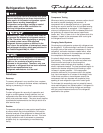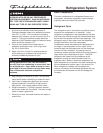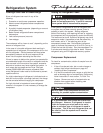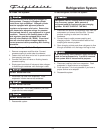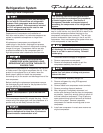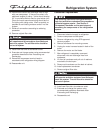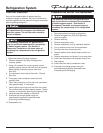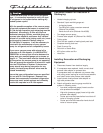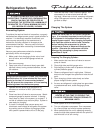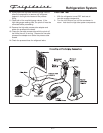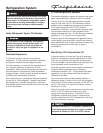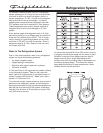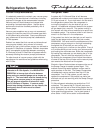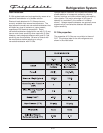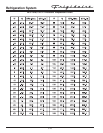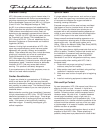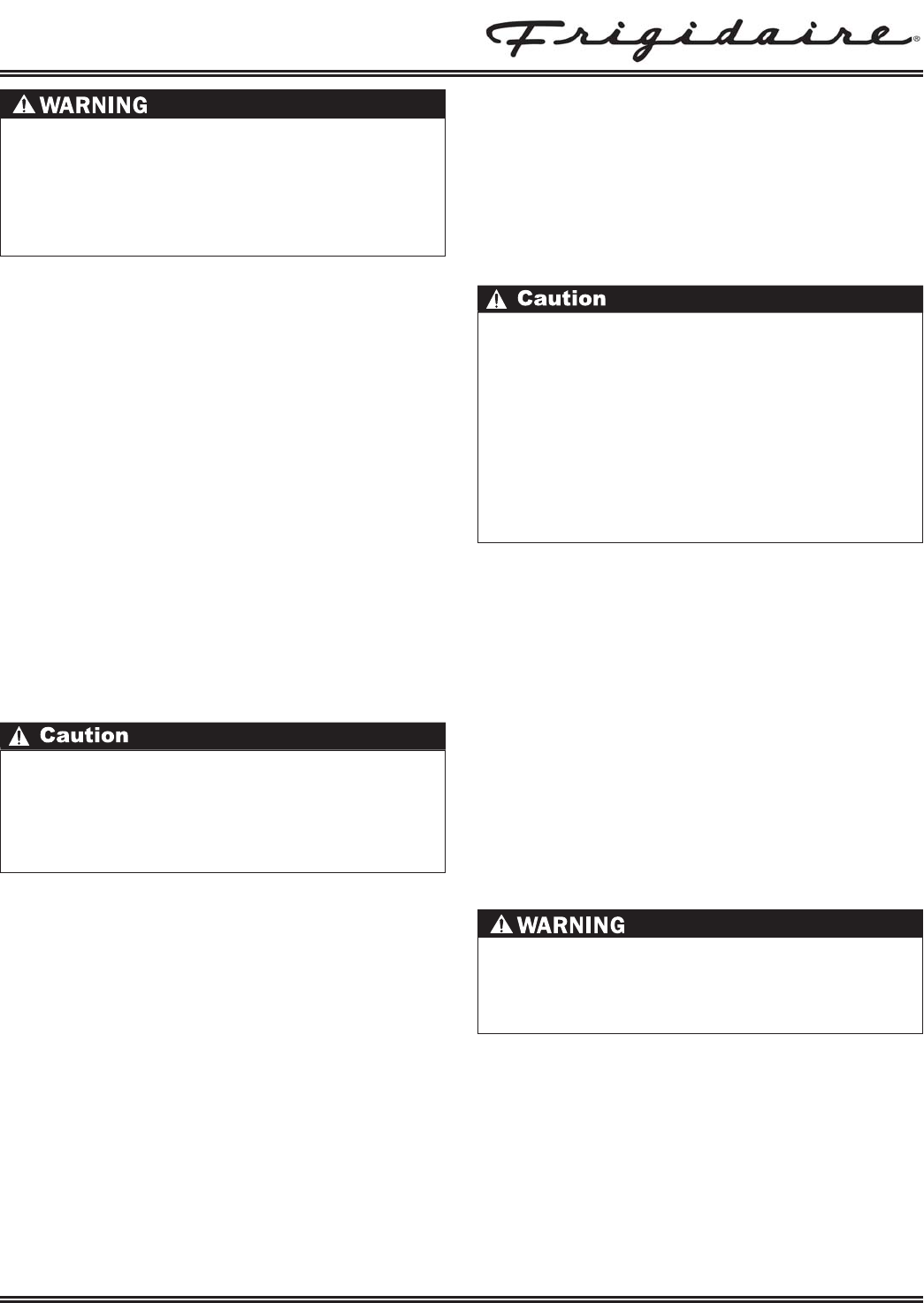
3-10
Refrigeration System
Evacuating System
To achieve the required levels of evacuation, a properly
maintained two stage vacuum pump in good condition is
required. It is absolutely essential to maintain your
vacuum pump according to the manufacturer’s
instructions including required oil changes at the
recommended intervals. Vacuum pump oil should
always be changed after evacuating a contaminated
system.
Vacuum pump performance should be checked
periodically with a micron gauge.
1. Make certain that charging cylinder valve, hand
shut-off valve, and manifold gauge valves are
closed.
2. Start vacuum pump.
3. Open hand shut-off valve and slowly open both
manifold valves, turning counterclockwise, for two
full rotations.
4. Operate vacuum pump for a minimum of 30
minutes to a minimum of 29.9” (500 micron)
vacuum.
5. Close hand shut-off valve to vacuum pump. Watch
compound gauge for several minutes. If reading
rises, there is a leak in the system, go to step 6. If
no leak is indicated, stop vacuum pump. System is
now ready for charging.
6. If a leak is indicated, stop vacuum pump and
introduce a small charge of refrigerant into system
by cracking valve on bottom of charging cylinder
until system is pressurized to 40 or 50 lbs psig.
7. Leak test low-side. Close compound gauge. Run
compressor for a few minutes and leak test
high-side. When leak is found, recapture refrigerant
using EPA approved recovery system. Repair and
go back to step 1.
Charging The System
Preparing The Charging Cylinder:
1. Make certain that hand shut-off valve to vacuum
pump is closed.
2. Close high-side manifold gauge valve.
3. Set charging cylinder scale to pressure indicated on
cylinder pressure gauge.
4. Observe refrigerant level in sight glass. Subtract
amount to be charged into system and note shut off
point.
5. Open charging cylinder valve slowly and allow
proper charge to enter system.
6. As soon as refrigerant in sight glass has gone down
to predetermined level, close charging cylinder
valve.
7. Allow system to sit for five minutes.
8. Turn on refrigerator compressor. Run compressor
for a few minutes and monitor system pressures.
9. When satisfied that the unit is operating correctly,
clamp the high-side process tube with the pinch-off
tool while the unit is still running.
R-134A SYSTEMS ARE PARTICULARLY
SUSCEPTIBLE TO MOISTURE CONTAMINATION
WHICH CAN ONLY BE PREVENTED BY
EVACUATING THE SYSTEM FOR A MINIMUM OF
30 MINUTES TO ATTAIN A MINIMUM 29.9 INCH
(500 MICRON OR LOWER) VACUUM.
DISCONNECT THE CHARGING CYLINDER
HEATER AT THIS TIME TO PREVENT THE
CYLINDER PRESSURE FROM EXCEEDING ITS
MAXIMUM LIMITS.
If high vacuum equipment is used, just crack both
manifold valves for a few minutes and then open
slowly for the two full turns counterclockwise.
This will prevent the compressor oil from foaming
and being drawn into the vacuum pump.
Check the serial plate for the correct refrigerant
type. It is extremely important to verify the type
of refrigerant in the system before starting any
sealed system repairs. After charging the system
with liquid be certain to wait at least 5 minutes
before starting the compressor to give the
refrigerant a chance to disperse throughout the
system. Otherwise the compressor could be
damaged by attempting to pump excessive
quantities of liquid.



